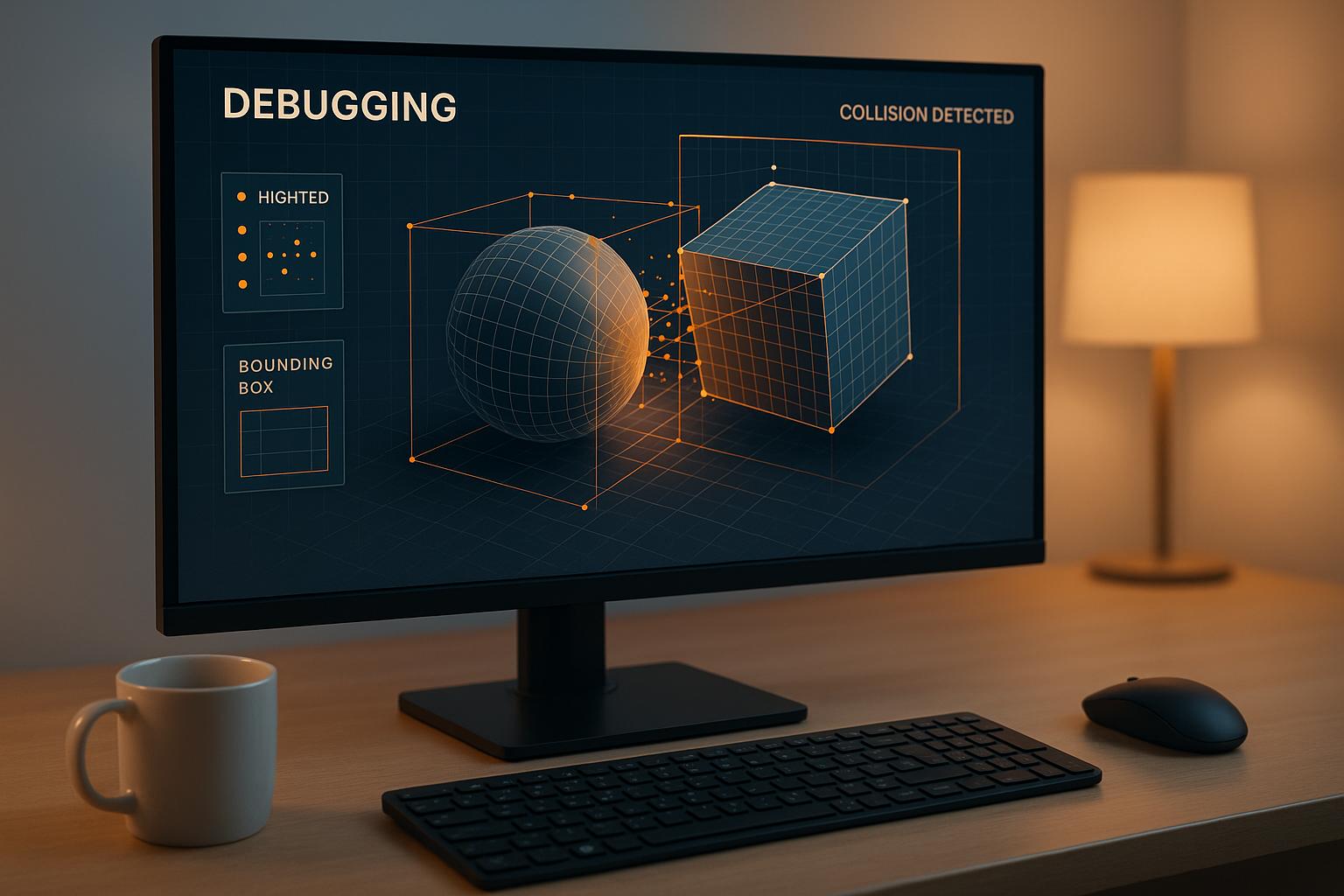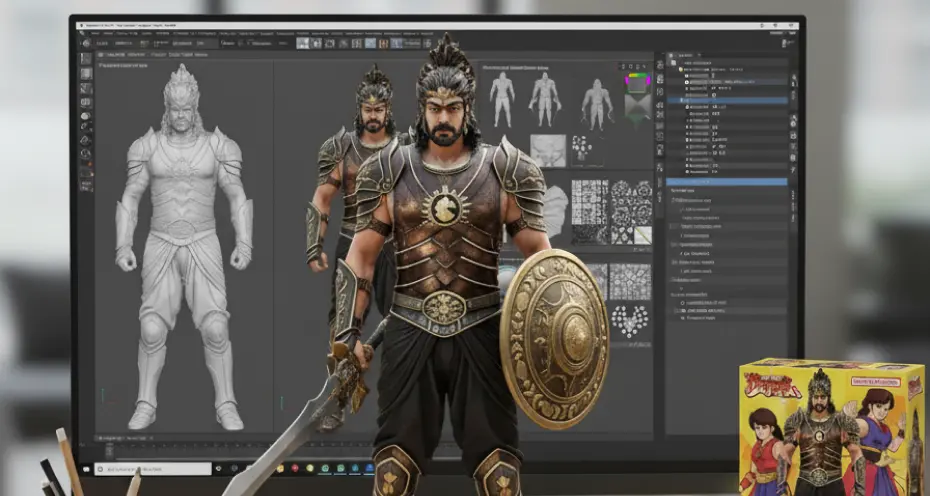Creating sharp and realistic textures is essential for 3D models to look great and work well across platforms. Here’s a quick breakdown of what you need to know:
- Why Texture Quality Matters: It affects how realistic your model looks, how fast it loads, and whether it works smoothly on different devices.
-
Key Factors to Focus On:
- Resolution: Higher resolution means more detail.
- UV Mapping: Ensures textures wrap correctly around 3D surfaces.
- Material Accuracy: Makes surfaces look like real-world materials (e.g., glossy, rough).
-
Evaluation Methods:
- Human Review: Spot subtle issues like seams or distortions.
- Automated Tools: Use metrics like SSIM and PSNR to measure quality.
-
Improvement Tips:
- Use software like Blender or Substance Painter for precise texturing.
- AI tools like Sloyd can automate UV mapping and enhance texture quality.
- Stick to standards like 2048×2048 resolution and PBR maps for best results.
Related video from YouTube
Human Assessment Methods
Human evaluation complements automated tools by addressing nuances that machines might overlook. While automated assessments are fast and consistent, human insights are essential for spotting subtle imperfections and ensuring perceptual quality.
Direct Inspection
Direct inspection involves professionals manually evaluating key texture attributes. Here's what they focus on:
| Attribute | What to Check | Impact |
|---|---|---|
| Structure | Pattern consistency, detail clarity | Improves realism |
| Noise Levels | Artifact presence, grain uniformity | Impacts material appearance |
| Resolution | Fine detail sharpness | Validates automated results |
| Seam Quality | Texture wrapping and alignment | Maintains model integrity |
Special attention is required for highly curved surfaces and complex seams, especially in models with over 100,000 vertices. These factors can reveal geometric quantization issues.
User Testing
User testing provides insights into how textures perform in practical applications. Key evaluation criteria include:
- Material accuracy: Do the textures convincingly represent real-world materials?
- Visual consistency: Are the textures cohesive across the model?
- Detail clarity: Are fine details preserved during rendering?
"The results revealed that the most detrimental artifact was lack of structural details." – Darshan Siddalinga Swamy, Kellen J. Butler, Damon M. Chandler, Sheila S. Hemami
Professional Review
Professional reviews build on initial evaluations by examining textures under various conditions. Reviewers assess how textures interact with model geometry and note challenges like Laplacian smoothing on curved surfaces. They also evaluate lighting effects, ensuring accurate reflectivity, shadows, and material representation align with technical benchmarks.
While human evaluation remains the most reliable method for assessing task-specific quality, studies show that quantitative metrics like mean-squared error and signal-to-noise ratio alone cannot fully account for perceived image quality.
These insights set the stage for integrating precise automated tools in the next section.
sbb-itb-d35aaa6
Measurement Tools and Standards
Objective tools play a key role in evaluating texture quality by using precise metrics. These tools complement human assessments, ensuring both consistency and accuracy in texture analysis.
Image Quality Metrics
Texture quality is often measured using specific image metrics:
| Metric | Description | Application |
|---|---|---|
| Peak Signal-to-Noise Ratio (PSNR) | Measures the signal-to-noise ratio between original and processed textures | Useful for quick technical comparisons |
| Structural Similarity Index (SSIM) | Assesses structural similarity between images | Focused on perceptual quality |
SSIM has been widely recognized, with its 2004 foundational paper cited over 50,000 times. It is particularly effective at identifying structural distortions while being less sensitive to changes in brightness or color.
Texture Analysis Tools
Modern tools evaluate various aspects of texture quality. One example is the Fast Quality Measure (FQM), which combines:
- Mean squared surface distance
- Mean squared error across texture pixels
For best results, textures should meet industry standards, which typically recommend resolutions of at least 2048×2048 pixels.
Visual Processing Metrics
Some advanced metrics are designed to mimic human visual perception, providing more accurate quality assessments:
- Multi-Scale SSIM (MS-SSIM): Evaluates texture quality across multiple scales, making it particularly useful for tasks like denoising.
- Visual Information Fidelity (VIF): Measures how much image information is lost due to texture distortion.
- Neural Network-Based Metrics: Newer metrics, such as LPIPS and DISTS, outperform traditional methods in tasks like deblurring and identifying artifacts.
Emerging metrics like MSDM2, FMPD, and DAME are also gaining attention for their ability to predict visual quality in 3D meshes. By combining these tools, professionals can ensure texture quality meets both technical and perceptual standards.
These measurable insights set the stage for refining texture quality, as explored in the next section.
Quality Improvement Methods
Improve texture quality by using technical standards, specialized software, and AI tools to achieve professional results.
Quality Standards
Creating high-quality textures starts with strong technical practices. Use high-resolution source materials and reliable mapping techniques to maintain detail and accuracy.
| Component | Recommended Approach | Purpose |
|---|---|---|
| Base Resolution | 2048×2048 minimum | Keeps details sharp and clear |
| UV Mapping | 0.5–1 pixel margin | Avoids texture bleeding |
| PBR Maps | Albedo, Normal, Roughness, Metallic | Simulates realistic material properties |
| Compression | BC7/ASTC for modern hardware | Balances performance and quality |
Software Options
Professional tools provide essential features for creating and refining textures, catering to different project needs.
| Software | Key Features | Best Use Case |
|---|---|---|
| Substance Painter | PBR workflow, procedural texturing | Game assets, high-detail visuals |
| Mari | Multi-tile handling, UDIM support | Film and VFX projects |
| Blender | Node-based texturing, built-in painting | Independent and smaller projects |
| ZBrush | Polypaint, displacement maps | Organic models, sculpted details |
These tools are ideal for preparing textures before applying advanced AI techniques.
AI Tools
AI tools simplify texture creation while maintaining high standards.
Sloyd (https://sloyd.ai) is an AI-powered platform for 3D asset creation. It offers instant access to millions of customizable variations, optimized for game development and real-time applications. Features like automatic UV unwrapping and optimization ensure consistent texture quality across models.
You can even apply textures directly in the Sloyd webapp, and continue to customize the models after applying the textures thanks to the automatic UV unwrapping in Sloyd.
For enhancing textures:
- Use AI upscaling to improve low-resolution textures.
- Apply AI-driven texture synthesis for seamless tiling.
- Generate complex surface details with procedural techniques.
To integrate AI-generated textures effectively, follow these steps:
| Step | Action |
|---|---|
| Asset Organization | Store AI-generated textures in specific folders |
| Version Control | Use clear and consistent naming conventions |
| Quality Control | Perform regular visual inspections |
| Integration | Combine AI-generated and manual textures strategically |
These practices ensure a smooth workflow and professional results.
Summary
This section pulls together the main metrics and actionable steps for managing texture quality effectively, based on the assessments and tools discussed earlier.
Key Points Review
Evaluating texture quality in 3D models involves a mix of automated tools and manual review. These tools focus on critical aspects of geometry and UV mapping, with the following key metrics:
| Metric Type | Key Measurements | Importance |
|---|---|---|
| Mesh Quality | Topology integrity, surface continuity | Ensures model stability |
| UV Efficiency | Space utilization, chart distribution | Influences texture performance |
| Texture Quality | Resolution, texture overwrites, seam alignment | Affects visual appearance |
Specialized tools help improve texture quality by offering features like:
- Automated mapping checks
- UV space adjustments
- Seam alignment reviews
Next Steps
To manage texture quality effectively, consider these steps:
-
Assessment and Analysis
- Use dedicated tools to evaluate initial quality.
- Validate results with established industry metrics.
-
Quality Implementation
- Refine surface topology and improve UV mapping.
- Check texture resolution and ensure seams are properly aligned.
- Adhere to recognized quality standards.
-
Advanced Solutions
- Combine traditional tools with easy-to-use 3D platforms like Sloyd.
- Use procedural generation methods for consistency.
- Ensure workflows remain compliant with intellectual property standards.
High-quality 3D models are essential for industries like gaming, animation, and manufacturing. They minimize post-production work and make future updates easier. By blending technical evaluations with modern tools, creators can uphold quality while streamlining their processes.





